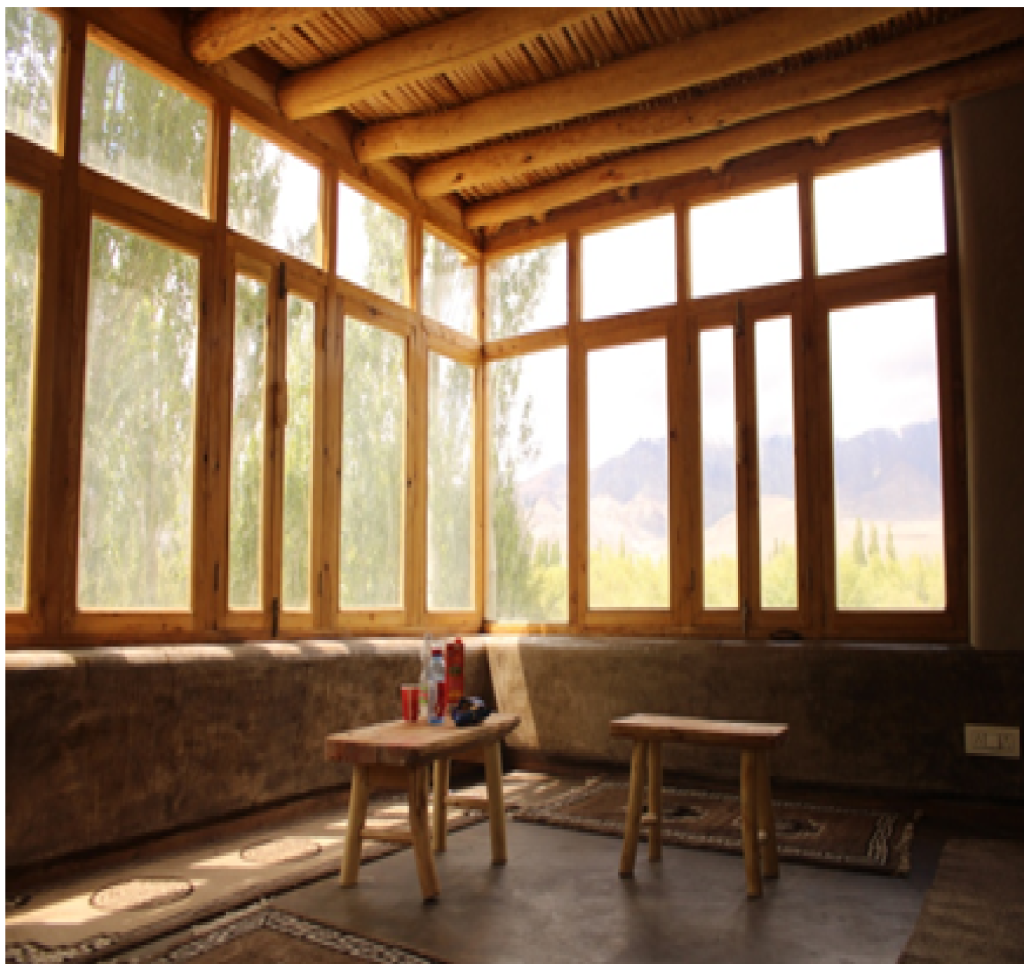
Restoration - the beauty of old buildings restored
More – often than not, we see old buildings that have that have lasted for decades and stood the test of time being pulled down and destroyed because it requires some repair work. Alternatively, restoring and repairing the old buildings will bring back the former glory of such buildings and there is also an option of re-doing the interiors according to our modern and contemporary needs.
We want to share with you a restoraton project in Ladakh done by Earth Building. Initially, a half-broken adobe house on the banks of the Indus river in Shey, our goal was to restore it completely using natural materials and make it into a home cum homestay for our client.
This was how we received the building. The building was half broken. The foundation was in place. We rebuilt on the existing foundation with adobe bricks and mud mortar . Adobe bricks are sun- dried bricks and completely made of mud. The old adobe of the structure which were fallen were intact and good to reuse. Additionally required adobe were bought from local adobe makers.


The olden doors and windows of the same structure were reclaimed, repaired and re-used. Local wood was used as lintels.
The roof is made of poplar and willow traditional Ladakhi mud roof(Thok). Poplar wood of approx diameter of 12″ is placed at a distance of 18″. Above that Willow sticks are placed across the poplar close to each othr. Above the willow, bush called bursae is placed. And then 8-10″ mud is compacted and sloped to drain out water. This is a completely natural roof that is used in Ladakh as it faces minimal rainfall and mostly it is snowfall. This kind of mud roof will work only where there is very minimal rainfall like Ladakh.


Before building the next floor, a wooden tie beam is made (Skat-shing). This wooden tie beam will help to hold the single pieces of adobe together.
The final outcome of the house came out like this. The exterior plaster was done with mud plaster (shat- kalakh), a kind of rough hand plaster.


Interiors were done with mirror clay finish- it’s a kind of mud plaster that is extremely smooth to touch and also shines to see. The painting on the wall is a depiction of traditional Ladakhi art (Thang-ka painting) and is made of natural pigments.
Staircase is finished with mud plaster and painted with linseed oil.


A traditional living- dining- kitchen combo in Ladakh (Chansa.) Finished completely in mud and wood. The kitcken backsplash is finished with linseed oil over mud plaster to make the plaster water resistant.
The wooden furniture were given a modern contemporary spin of the traditional Ladakhi Chokses(low tables).
A sun room(Shel-khang) in the first floor has a corner window letting in ample amount of sun. The flooring is also mud floor finished off with linseed oil and beeswax finish.


